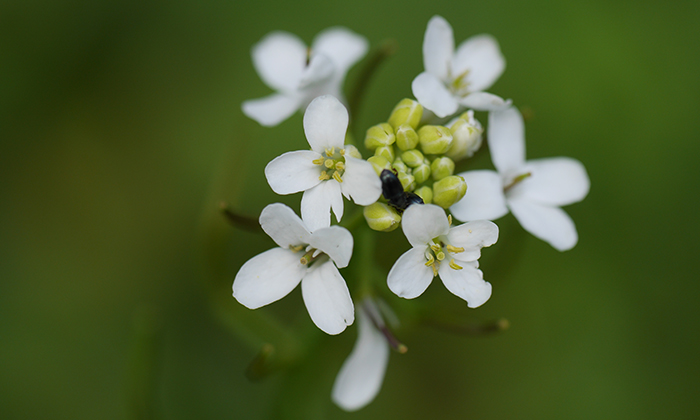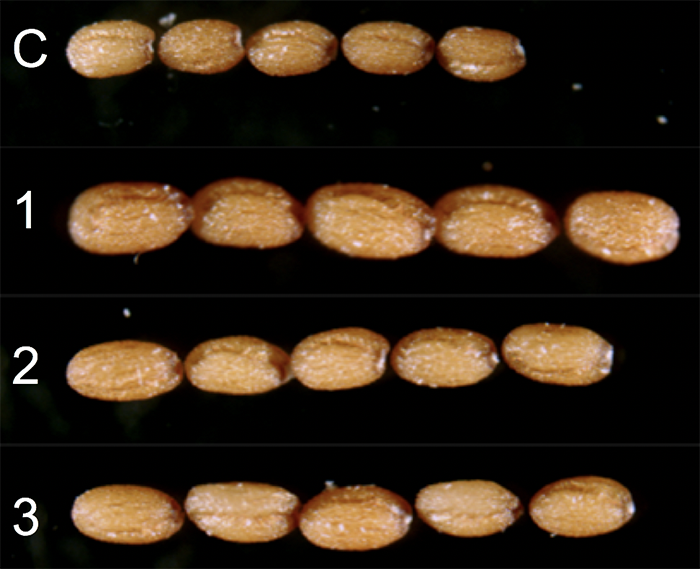Scientists Uncover RNA Silencing Technique to Change Seed Size in Plants

Arabidopsis. Photo courtesy of Dawid Skalec. Wikicommons media.
In a development with promising implications for crop farmers in the U.S. and around the world, scientists at The University of Texas at Austin have figured out how to get some plants to produce nearly one-third bigger seeds.
In a paper out today in the Proceedings of the National Academy of Sciences, a team of scientists led by Z. Jeffrey Chen, a professor of molecular biosciences, were able to alter gene expression in plants in such a way that the size of Arabidopsis seeds, commonly known as mouse-ear cress, changes.
The plant is closely related to mustard and cabbage, and the findings could have implications for staple crops like canola and soy beans. The team observed that seed traits could be changed through the use of maternal small interfering RNAs (siRNAs), alterations that impacted how genes were expressed during the critical early stages of development, as the nutritious part of the seed, the endosperm, forms.
These siRNAs control expression of genes that regulate endosperm development through a process known as RNA-directed DNA methylation. Depending on how the expression of these target genes was manipulated, the endosperm of the seeds could be made up to 30 percent larger or 10 percent smaller.
Larger seeds would provide more nutrition; smaller seeds would provide more seeds per plant. Both outcomes could be valuable for plant production and agricultural purposes.
"It is possible to modify this tool in order to improve seed production in crops," Chen said.

Examples of larger seeds created using the technique. The C row is the control. The other rows represent results of the RNA silencing technique. Photo courtesy by University of Texas at Austin.
Interestingly, the process of manipulating the siRNAs and gene expression in the endosperm did not alter the embryo of the plant. That means offspring would grow normally and produce seeds.
The team used laser-capture microdissection to analyze the Arabidopsis seeds, which are about the size of the head of a needle. They also used fluorescent and staining tracking, pinpointing when and where siRNAs and their target genes were expressed. This has clarified confusions about siRNA location and action because it is hard to separate seed coat and endosperm.
Next, the team wants to study whether the maternal siRNAs produced in one part of the seed, like the endosperm, can move and affect expression of genes in other parts, like the seed coat and embryo, or genes of paternal origin in hybrid plants.
Ryan Kirkbride, Jie Lu and Changqing Zhang of UT Austin, Rebecca Mosher of the University of Arizona and David Baulcombe of the University of Cambridge also contributed to the research. The research was funded through grants from the National Institutes of Health and the National Science Foundation. Chen holds the D.J. Sibley Centennial Professorship in Plant Molecular Genetics. Sr. Baulcombe is the Royal Society Edward Penley Abraham Professor.



